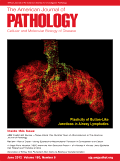
AMERICAN JOURNAL OF PATHOLOGY
Scope & Guideline
Advancing the Frontiers of Pathology Research
Introduction
Aims and Scopes
- Disease Mechanisms and Pathogenesis:
The journal publishes studies that elucidate the underlying mechanisms of diseases, particularly focusing on cellular and molecular pathways that contribute to pathogenesis. - Diagnostic Pathology:
AJP emphasizes the development and application of diagnostic methodologies, including histopathology and the use of advanced imaging techniques, to improve disease detection and classification. - Translational Research:
The journal bridges laboratory research and clinical applications, promoting studies that translate findings from basic science into clinical practice to enhance patient care. - Innovative Therapeutics:
AJP highlights novel therapeutic strategies, including drug development and genetic interventions, that target specific pathways in disease processes. - Emerging Technologies in Pathology:
The journal covers advancements in technology, such as artificial intelligence and machine learning, that enhance diagnostic capabilities and improve the understanding of disease progression.
Trending and Emerging
- Artificial Intelligence and Machine Learning:
The integration of AI and machine learning in pathology is rapidly growing, with an emphasis on automating image analysis and improving diagnostic accuracy. - Microbiome Research:
There is an increasing focus on the role of the microbiome in various diseases, highlighting its impact on pathogenesis and therapeutic responses, particularly in gastrointestinal and metabolic disorders. - Immunopathology and Inflammation:
Research exploring the immune response and its role in disease progression, especially in the context of COVID-19 and autoimmune diseases, is gaining prominence. - Targeted Therapies and Personalized Medicine:
Studies focusing on targeted treatments and personalized medicine approaches are on the rise, reflecting advancements in understanding genetic and molecular disease mechanisms. - Environmental and Lifestyle Factors in Disease:
Research exploring the impact of environmental exposures, diet, and lifestyle on disease susceptibility and progression is emerging as a significant area of interest.
Declining or Waning
- Traditional Histopathology Techniques:
There has been a noticeable decrease in publications centered solely on traditional histopathology methods, as the field increasingly incorporates digital pathology and computational techniques. - Basic Histological Studies:
Research that primarily focuses on basic histological descriptions without integrating modern molecular or genetic insights appears to be waning, as the field moves towards more comprehensive analyses. - Non-Translational Studies:
Studies that do not connect laboratory findings with clinical implications are less frequently published, indicating a growing emphasis on translational research that directly impacts patient outcomes. - Single Disease Focus:
There is a trend away from studies that focus exclusively on a single disease entity, as researchers increasingly adopt interdisciplinary approaches that consider multiple diseases or conditions in a broader context.
Similar Journals
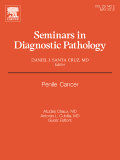
SEMINARS IN DIAGNOSTIC PATHOLOGY
Advancing knowledge in diagnostic pathology.Seminars in Diagnostic Pathology is a premier journal that has established itself as an essential resource in the field of pathology since its inception in 1984. Published by W B Saunders Co-Elsevier Inc, this journal boasts an impressive Q1 ranking in the pathology category for 2023, placing it in the top tier of medical journals worldwide. With a focus on diagnostic pathology, it offers a platform for groundbreaking research and advancements that bridge the gap between basic science and clinical practice. The journal is committed to publishing high-quality review articles, case reports, and expert opinions that provide valuable insights for professionals, researchers, and students alike. Although it operates on a subscription model, the journal's extensive impact is reflected in its Scopus rank (#56/208), with a remarkable 73rd percentile standing in the pathology and forensic medicine category. The journal's authoritative content not only aids in enhancing knowledge but also fosters an understanding of the evolving challenges and methodologies in diagnostic pathology, making it an indispensable tool for anyone dedicated to excellence in the field.

PATHOLOGICA
Elevating Research Standards in Pathology and Forensic Sciences.PATHOLOGICA is a leading academic journal dedicated to the field of pathology and forensic medicine, published by PACINI EDITORE. With a rich history dating back to its inception in 1945, the journal has consistently contributed to the advancement of knowledge in these vital areas of medical research and practice. Currently ranked in the Q1 quartile for Pathology and Forensic Medicine and holding an impressive position as #42 out of 208 in the Scopus rankings, it reflects a significant impact within the academic community, boasting an 80th percentile ranking. The journal is committed to publishing high-quality, peer-reviewed articles that explore innovative research findings and clinical advancements, making it an essential resource for researchers, clinicians, and students alike. Though it does not offer open access, PATHOLOGICA continues to foster scholarly communication by disseminating cutting-edge research findings, thus playing a pivotal role in enhancing pathology education and practice worldwide.
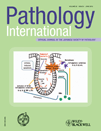
PATHOLOGY INTERNATIONAL
Navigating the Evolving Landscape of Pathological InsightsPATHOLOGY INTERNATIONAL, published by WILEY, stands as a distinguished journal in the field of pathology and forensic medicine, serving as an essential resource for researchers, clinicians, and students alike. With its ISSN 1320-5463 and E-ISSN 1440-1827, PATHOLOGY INTERNATIONAL has established itself since its inception in 1951, navigating through an evolving landscape in medical science with insights and breakthroughs up to 2024. It holds a commendable Q2 ranking in both the Medicine (miscellaneous) and Pathology and Forensic Medicine categories, indicating its robust influence and quality within these fields, as evidenced by its placement in the 70th percentile of Scopus rankings. While currently not an open-access journal, it provides access options that ensure valuable research remains available to the academic community. PATHOLOGY INTERNATIONAL commits to advancing the discipline through pioneering research articles, comprehensive reviews, and expert opinions that push the boundaries of understanding in pathology, thereby supporting the enhancement of diagnostic and therapeutic practices.

ENDOCRINE PATHOLOGY
Shaping the Landscape of Endocrine PathologyENDOCRINE PATHOLOGY is a premier journal published by HUMANA PRESS INC, dedicated to advancing the understanding of endocrine disorders through innovative research and clinical practices. With an impressive impact factor and consistently ranked in the Q1 quartile across multiple categories such as Endocrinology, Diabetes and Metabolism, as well as Pathology and Forensic Medicine, this journal serves as a pivotal resource for researchers and professionals in the field. The journal covers a broad spectrum of topics related to endocrine pathology, providing insights into mechanisms, diagnostics, and therapeutics that inform both clinical and laboratory practices. Although it does not offer open access, its rigorous peer-review process ensures the dissemination of high-quality, impactful research that shapes clinical strategies and enhances patient care. With distribution spanning from its inception in 1990 to 2024, ENDOCRINE PATHOLOGY stands at the forefront of endocrine research, making it an essential read for anyone involved in the study and treatment of endocrine disorders.
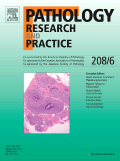
PATHOLOGY RESEARCH AND PRACTICE
Advancing the Frontiers of Pathological SciencePATHOLOGY RESEARCH AND PRACTICE is a premier journal in the field of pathology and forensic medicine, published by Elsevier GmbH in Germany. With a rich publication history since 1978 and an impressive convergence period extending to 2024, this journal serves as a vital resource for researchers and professionals dedicated to advancing the understanding of pathological processes. It holds notable rankings, including Q3 in Cell Biology and Q2 in Pathology and Forensic Medicine for 2023, reflecting its significance in the academic community. The journal aims to publish innovative research findings, reviews, and case studies, facilitating a deeper understanding of disease mechanisms and improving diagnostic practices. Authors and readers alike benefit from its reputable platform, noted for its challenging and rigorous peer-review process. By fostering a collaborative environment and providing open access options, PATHOLOGY RESEARCH AND PRACTICE continues to contribute meaningfully to the discourse within its respective fields, thereby appealing to a diverse audience of researchers, professionals, and students.
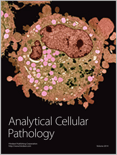
Analytical Cellular Pathology
Empowering Scholars with Open Access DiscoveriesAnalytical Cellular Pathology, published by Hindawi Ltd, is a leading journal in the disciplines of Cancer Research, Cell Biology, and Pathology, and has been dedicated to advancing the field through open access since 1997. Based in Egypt, this journal plays a crucial role in disseminating cutting-edge research and innovative findings, fostering collaboration among researchers and professionals alike. With an impressive array of metrics, including its Q2 ranking in Pathology and Forensic Medicine and notable Scopus rankings, the journal attracts a diverse readership, ensuring significant impact in its categories. Designed to cater to the needs of both emerging and established scholars, Analytical Cellular Pathology promotes accessibility and exchange of knowledge, making it an indispensable resource for those engaged in modern cellular pathology research.

VIRCHOWS ARCHIV
Delivering Rigorous Insights for Clinical ExcellenceVirchows Archiv, published by Springer, is an esteemed journal dedicated to the fields of Medicine and Pathology, featuring high-quality research from various domains including Cell Biology and Molecular Biology. With its inception dating back to 1947, Virchows Archiv has been a pivotal platform for advancing the understanding of pathological and forensic medicine. As evidenced by its impressive Scopus rank, placing it within the top 15% of journals in Pathology and Forensic Medicine, it continues to maintain a strong presence with a Q1 classification in its category as of 2023. Although it does not offer Open Access options, the journal remains critical for researchers and professionals seeking to publish and access pioneering findings that can impact clinical practices and the academic community. The journal’s rigorous peer-review process ensures that only the highest quality research is disseminated, making it an essential resource for those engaged in the ever-evolving fields of health and biological sciences.
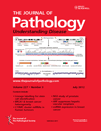
JOURNAL OF PATHOLOGY
Shaping the Future of Pathological ResearchWelcome to the Journal of Pathology, a premier academic publication specializing in the field of pathology and forensic medicine. Established in 1969 and published by Wiley, this journal has garnered significant recognition within the research community, reflected in its impressive ranking of #6 out of 208 in Scopus, placing it in the 97th percentile. The Journal of Pathology serves as a critical platform for disseminating cutting-edge research findings, innovative methodologies, and topical reviews that advance our understanding of diseases and their underlying mechanisms. With no open access charge, this esteemed journal is committed to maintaining the highest standards of scientific rigor and integrity. As a Q1 journal in its category for 2023, it continues to shape the field of pathology and contribute invaluable insights to researchers, medical professionals, and students alike. We invite you to explore the wealth of knowledge encapsulated in each issue and engage with the vibrant discussions that strive to propel the science of pathology forward.
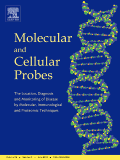
MOLECULAR AND CELLULAR PROBES
Exploring the Frontiers of Cell and Molecular BiologyMOLECULAR AND CELLULAR PROBES, published by Academic Press Ltd - Elsevier Science Ltd, stands as a prominent journal at the intersection of cell and molecular biology. With an ISSN of 0890-8508 and an E-ISSN of 1096-1194, this journal has consistently contributed to the scientific discourse since its inception in 1987, converging its scholarly content through to 2024. As a member of Q3 in both Cell Biology and Molecular Biology categories, it provides a platform for innovative research and critical insights into cellular mechanisms, signaling pathways, and molecular interactions. Its Scopus rankings position it within the top half of its categories, fostering a vibrant academic community that supports the exploration and advancement of biochemistry, genetics, and molecular biology. Although it does not currently offer Open Access, the high-quality peer-reviewed articles published in MOLECULAR AND CELLULAR PROBES are invaluable resources for researchers, professionals, and students who seek to stay at the forefront of breakthroughs in these essential fields.
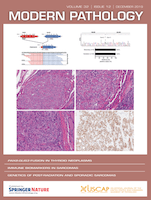
MODERN PATHOLOGY
Innovating Diagnostic Excellence in PathologyMODERN PATHOLOGY is a premier journal in the field of pathology and forensic medicine, published by Elsevier Science Inc. With an impressive impact factor that places it in the top 1st quartile (Q1) for 2023, and a remarkable rank of 5 out of 208 in its category according to Scopus, it serves as a vital resource for researchers, professionals, and students alike. Established in 1988, the journal focuses on the latest advancements in diagnostic pathology, molecular pathology, and related fields, providing a platform for innovative research that drives the discipline forward. Although it does not operate under an open access model, readers can expect rigorously peer-reviewed publications that contribute to the growing body of knowledge in pathology. With a continuous commitment to excellence and relevance, MODERN PATHOLOGY remains a fundamental avenue for disseminating high-quality scientific research globally, facilitating the growth and development of its field.